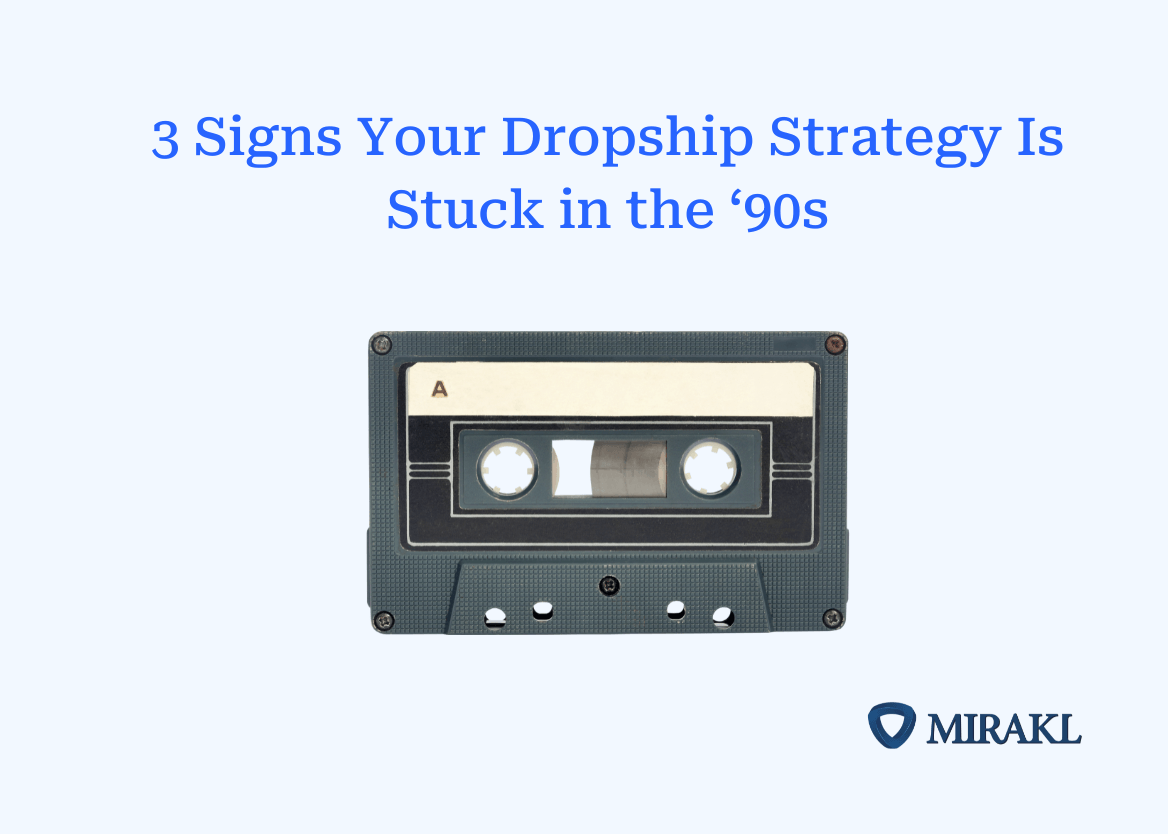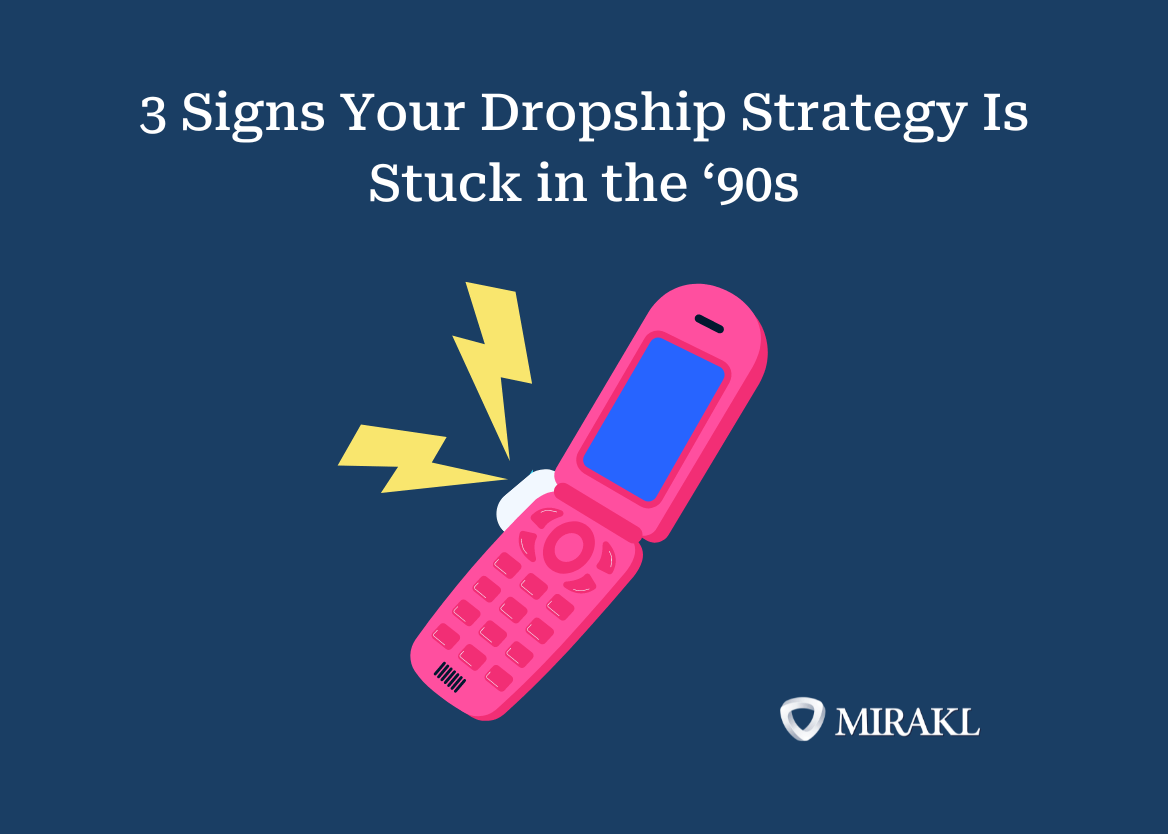3 Signs Your Dropship Strategy is Stuck in the '90s: Using Monolithic and Inflexible Platforms

We’ve discussed the idea that dropship can help you offer product variety, newness and easy website navigation – all key to delivering the shopping experience your customers want. And despite the fact that there is no single recipe to reach profitability with dropship, the right dropship solution can centralize information on vendor costs, margins and retail price to help you quickly determine the winning pricing strategy for your business.
The third common mistake we hear from retailers with dropship strategies is the disconnect between spend in technology and resources, and the resulting return on investment. KPMG highlights the importance of not wasting assets and ensuring that you’re investing in the right tools to meet strategic eCommerce objectives:
“Players should take a strategic and holistic approach that takes into account a range of factors such as customer requirements, new technologies, innovation activities, customer data and market channels, for example. The focus should be on driving customer retention, reducing costs and creating differentiation.”
Adding to this, according to Flexera’s 2023 State of ITAM Report, more than 30% of enterprises' SaaS and IaaS/PaaS spend is underutilized or wasted. Is your dropshipping solution contributing to these stats, or is it a means for your business to achieve revenue growth? Here are three warning signs to look out for:
1. Rigid architecture
“My business is unique!” That’s an extremely common statement from retailers. But having a unique business doesn’t mean that every system and procedure you use to power your dropship model need to be built exclusively for your business.
It’s very common for retailers with completely customized tech stacks to reach a point where it becomes difficult to scale and innovate, and extremely challenging to connect with vendors. This usually happens because it’s costly to maintain these custom systems, invest in innovation, and continue to focus on what they were trying to achieve in the first place: differentiating themselves from the competition. Not to mention that when you build something custom for your tech stack, it's never perfectly compatible with your vendors’ own tech, creating a new hurdle to overcome.
Instead of starting from scratch, look for a purpose-built platform that gives you flexibility to adapt fast to your customers’ demands. The right dropship solution can give you out-of-the box capabilities that make it easy for you plug-and-play, while freeing up resources to focus on the differentiators that are core to your business.
2. Reliant on IT resources
Is your buying team autonomous, and able to perform daily tasks around your dropship business? If your dropshipping solution doesn’t offer out-of-the-box capabilities for you to operate efficiently, this can strain IT resources. Instead of focusing on complex projects requiring specialized skills, they’ll spend their time filling technical gaps in your operations, both by troubleshooting and by building custom alternatives.
Vendor and catalog onboarding, price changes, product detail updates, vendor communication, dashboards and access to insights are just a few of the activities that can live in a centralized portal, so you can perform these key functions in a few clicks without IT team hand-holding.
3. Technology that limits your ability to scale
Many retailers bring vendors onboard in a dropship capacity with the goal of meeting customers' demand and ultimately translating their loyalty into more revenue. And it almost goes without saying that a high volume of transactions is a good indicator of eCommerce business growth. But how equipped is your dropship platform to support your eCommerce success? A system failure during high-traffic seasons, like flash sales or Cyber Week events, is the worst case scenario, causing not only customer frustration but a major loss in revenue.
Besides 100% uptime, your infrastructure needs to be secure. Trust goes a long way, but it is quickly undermined if you have security issues. Your customers want to know that their personal details are safe at all times when shopping with you. Be sure to protect your credibility by confirming that your dropship platform has the right security certifications to keep up with the most stringent cyber safety standards.
The goal of any dropship business is to expand your product assortment, reach more customers, and drive more revenue. Find a solution that’s reliable, flexible, that will give you room to innovate and grow, keeping your customer information and your reputation secure. With the right technology partner, your only focus and concerns should be your customers.
Ready to bring your dropship practices into the future? Connect with Mirakl's resident dropship expert, Luke Heffernan, to learn more.



